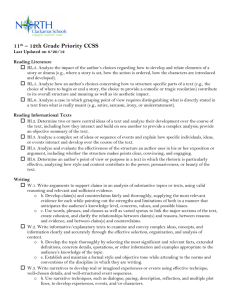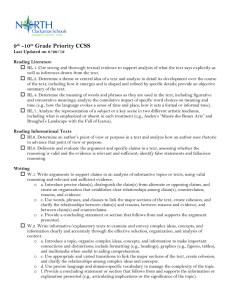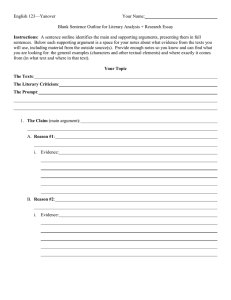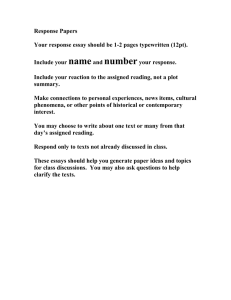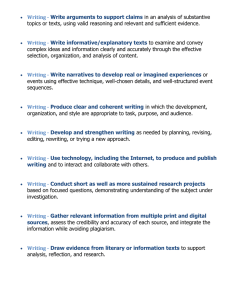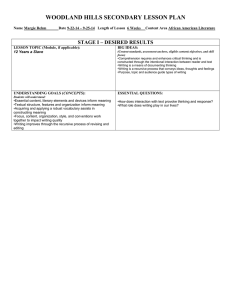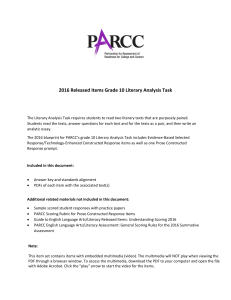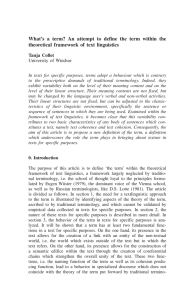Essential Curriculum Standards: Reading:
advertisement
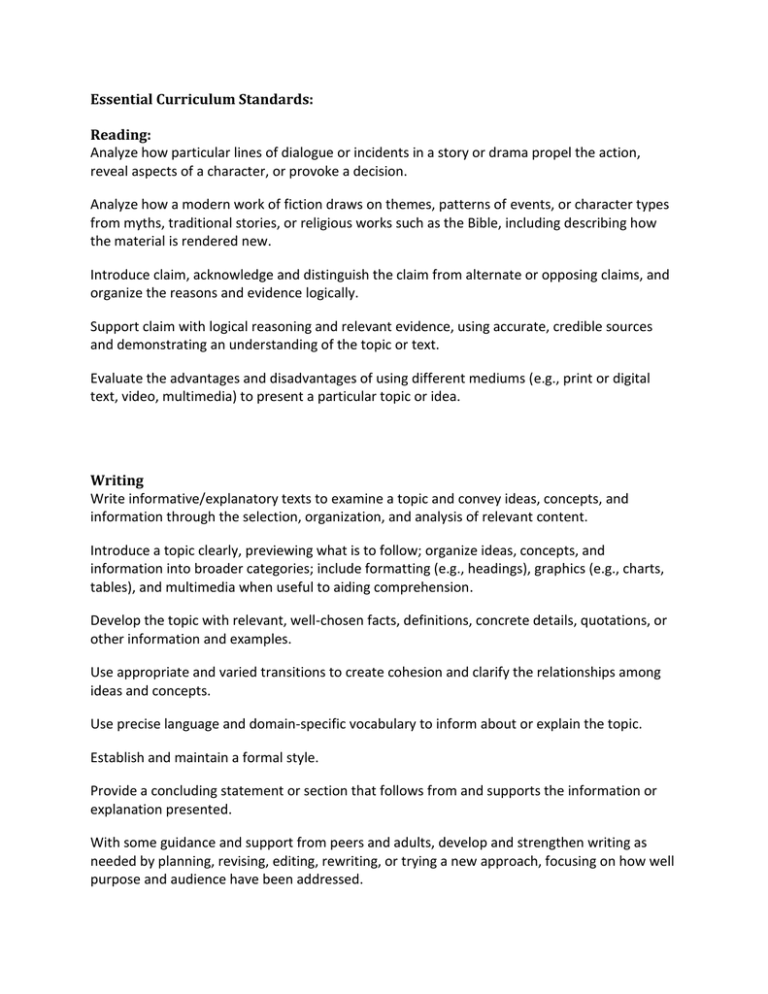
Essential Curriculum Standards: Reading: Analyze how particular lines of dialogue or incidents in a story or drama propel the action, reveal aspects of a character, or provoke a decision. Analyze how a modern work of fiction draws on themes, patterns of events, or character types from myths, traditional stories, or religious works such as the Bible, including describing how the material is rendered new. Introduce claim, acknowledge and distinguish the claim from alternate or opposing claims, and organize the reasons and evidence logically. Support claim with logical reasoning and relevant evidence, using accurate, credible sources and demonstrating an understanding of the topic or text. Evaluate the advantages and disadvantages of using different mediums (e.g., print or digital text, video, multimedia) to present a particular topic or idea. Writing Write informative/explanatory texts to examine a topic and convey ideas, concepts, and information through the selection, organization, and analysis of relevant content. Introduce a topic clearly, previewing what is to follow; organize ideas, concepts, and information into broader categories; include formatting (e.g., headings), graphics (e.g., charts, tables), and multimedia when useful to aiding comprehension. Develop the topic with relevant, well-chosen facts, definitions, concrete details, quotations, or other information and examples. Use appropriate and varied transitions to create cohesion and clarify the relationships among ideas and concepts. Use precise language and domain-specific vocabulary to inform about or explain the topic. Establish and maintain a formal style. Provide a concluding statement or section that follows from and supports the information or explanation presented. With some guidance and support from peers and adults, develop and strengthen writing as needed by planning, revising, editing, rewriting, or trying a new approach, focusing on how well purpose and audience have been addressed. Conduct short research projects to answer a question (including a self-generated question), drawing on several sources and generating additional related, focused questions that allow for multiple avenues of exploration. Draw evidence from literary or informational texts to support analysis, reflection, and research. Apply grade 8 Reading standards to literary nonfiction (e.g., “Delineate and evaluate the argument and specific claims in a text, assessing whether the reasoning is sound and the evidence is relevant and sufficient; recognize when irrelevant evidence is introduced”). Use words, phrases, and clauses to create cohesion and clarify the relationships among claim , counterclaims, reasons, and evidence. Provide a concluding statement or section that follows from and supports the argument presented.
